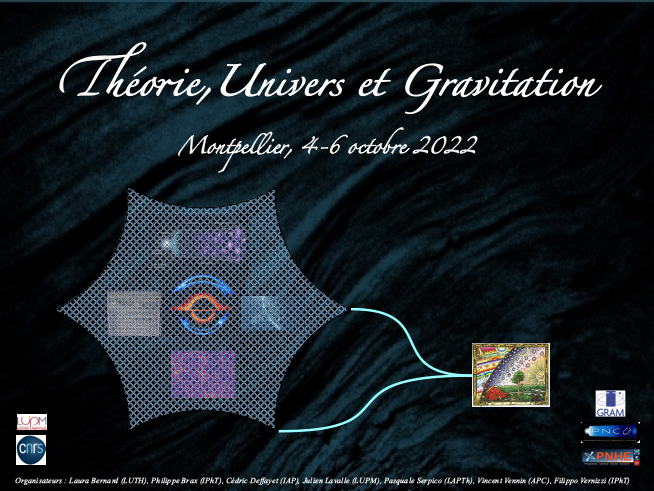Orateur
Description
We investigate the flow around a black hole moving through a cloud of self-interacting scalar dark matter. We focus on the large scalar mass limit, with quartic self-interactions, and on the subsonic regime. We show how the scalar field behaves as a perfect gas of adiabatic index $\gamma_{\rm ad}=2$ at large radii while the accretion rate is governed by the relativistic regime close to the Schwarzschild radius. We obtain analytical results thanks to large-radius expansions, which are also related to the small-scale relativistic accretion rate. We find that the accretion rate is greater than for collisionless particles, by a factor $c/c_s \gg 1$, but smaller than for a perfect gas, by a factor $c_s/c \ll 1$, where $c_s$ is the speed of sound. The dynamical friction is smaller than for a perfect gas, by the same factor $c_s/c \ll 1$,
and also smaller than Chandrasekhar's result for collisionless particles, by a factor $c_s/(cC)$, where $C$ is the Coulomb logarithm. It is also smaller than for fuzzy dark matter, by a factor $v_0/c \ll 1$.

